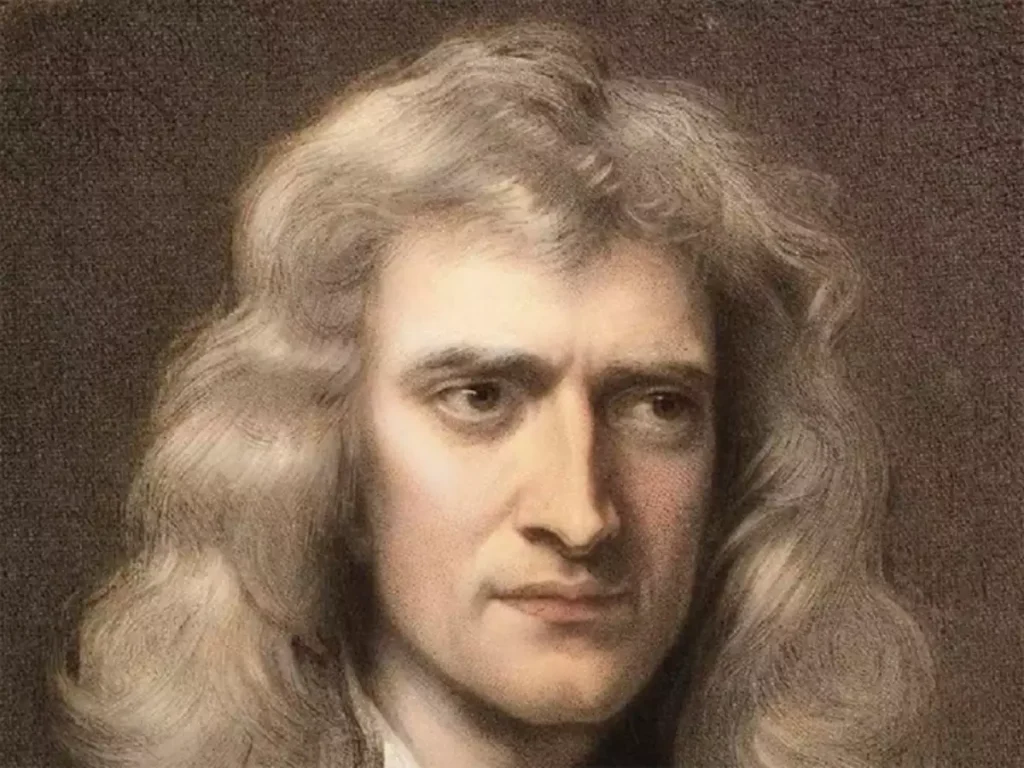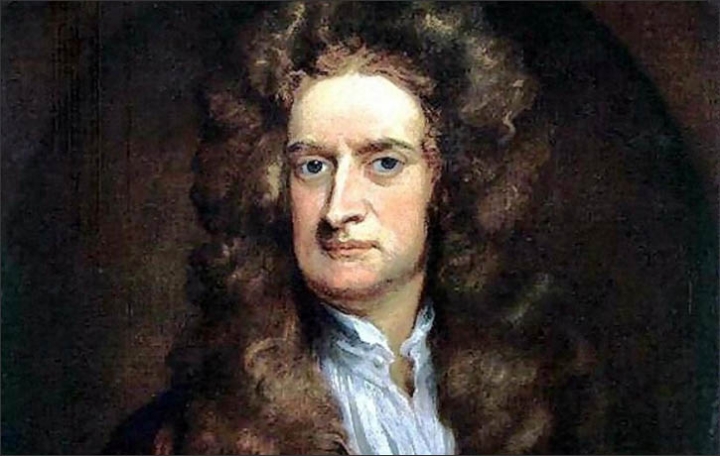Sir Isaac Newton was a brilliant mathematician, physicist, astronomer, and philosopher whose discoveries laid the groundwork for much of modern science. Known for formulating the laws of motion and universal gravitation, Newton forever changed how we understand the physical world. His groundbreaking work in mathematics, optics, and mechanics helped define the Scientific Revolution and shaped the course of human knowledge. Few individuals have had as profound an impact on science, technology, and our view of the universe as Newton.
Newton’s legacy extends beyond science books and academic lectures; his theories form the basis of engineering, space travel, and modern physics. He exemplified the power of human intellect and curiosity, showing how observation, reasoning, and experimentation could unlock the mysteries of nature. His life and work remain a testament to the importance of inquiry and discovery.
Early Life and Education
Isaac Newton was born on January 4, 1643, in Woolsthorpe, Lincolnshire, England. His birth was premature, and he was not expected to survive. His father had died just months before he was born, and his mother remarried, leaving Newton to be raised by his grandparents. Despite a turbulent early childhood, Newton demonstrated a strong interest in mechanical devices, often constructing small machines and inventions as a boy. His early education took place at local schools, where he quickly stood out for his intelligence and curiosity.
In 1661, Newton entered Trinity College at the University of Cambridge. There, he immersed himself in the study of mathematics and natural philosophy. Although the curriculum was largely based on ancient teachings, Newton pursued the latest scientific ideas independently. He read the works of Descartes, Galileo, and Kepler, among others, and began developing his own ideas about motion, optics, and mathematics. The outbreak of the Great Plague in 1665 forced the university to close temporarily, prompting Newton to return home. This two-year period became one of the most productive in scientific history, as Newton developed the foundations of calculus, formulated his laws of motion, and began thinking about gravity.

The Laws of Motion and Classical Mechanics
One of Isaac Newton’s most celebrated contributions to science is his formulation of the three laws of motion, which he published in 1687 in his landmark book, Philosophiæ Naturalis Principia Mathematica (Mathematical Principles of Natural Philosophy), commonly known as the Principia. These laws describe how objects move in response to forces, laying the groundwork for classical mechanics. Newton’s First Law, the law of inertia, states that an object will remain at rest or move in a straight line unless acted upon by an external force. The Second Law explains how force equals mass times acceleration (F = ma), establishing a clear relationship between force and motion. The Third Law, perhaps the most famous, asserts that for every action, there is an equal and opposite reaction.
These laws revolutionized the scientific view of motion and replaced earlier ideas proposed by Aristotle. Newton showed that the same laws applied both on Earth and in the heavens, unifying terrestrial and celestial mechanics. His insights explained everything from falling apples to planetary orbits, bringing order and predictability to physical phenomena. The principles of Newtonian mechanics remain foundational in physics, engineering, and technology to this day, from designing vehicles and bridges to launching spacecraft.
Universal Gravitation: Connecting Earth and the Cosmos
Newton’s law of universal gravitation is another of his monumental achievements. It states that every mass in the universe attracts every other mass with a force proportional to the product of their masses and inversely proportional to the square of the distance between them. This elegant formula, represented as F = G(m1m2)/r², explained why apples fall to the ground and why planets orbit the sun. It was the first theory to provide a universal explanation for both earthly and cosmic phenomena.
This idea was revolutionary because it proposed a force acting at a distance—something previously considered impossible. Newton’s theory of gravitation not only explained Kepler’s laws of planetary motion but also predicted the behavior of comets, tides, and even the shape of Earth. His mathematical model unified the heavens and the Earth under the same set of laws, giving birth to a new era in science. For the next two centuries, Newton’s law of gravitation would be the cornerstone of astronomy and physics until Einstein’s theory of general relativity refined our understanding of gravity.
Mathematics and the Invention of Calculus
In addition to his work in physics, Newton made pioneering contributions to mathematics. During his years away from Cambridge due to the plague, he developed what he called “fluxions,” which we now know as calculus. This new branch of mathematics enabled scientists to model change and motion with incredible precision. Newton’s calculus allowed him to express rates of change, find tangents to curves, and calculate areas under curves—tools essential for his work on motion and gravity.
Though calculus was independently developed by German mathematician Gottfried Wilhelm Leibniz around the same time, a bitter dispute arose over who had discovered it first. While historians now credit both men, Newton’s contributions were more closely tied to physical applications. He used calculus to support his theories in physics and astronomy, making it an essential part of the scientific toolkit. Today, calculus is indispensable in physics, engineering, economics, and computer science, highlighting the lasting impact of Newton’s work in mathematics.

Optics and the Nature of Light
Newton’s fascination with light and color led to groundbreaking discoveries in optics. Through experiments with prisms, he demonstrated that white light is composed of a spectrum of colors—red, orange, yellow, green, blue, indigo, and violet. He disproved the longstanding belief that prisms colored the light, showing instead that the colors already existed within white light. His work in optics culminated in the publication of Opticks in 1704, a detailed exploration of light, reflection, refraction, and color.
Newton also invented the reflecting telescope to address the problem of chromatic aberration in lenses. His design used mirrors instead of lenses, producing clearer images and becoming the model for modern telescopes. This innovation allowed astronomers to observe the universe with greater clarity and helped confirm many of Newton’s astronomical theories. His work in optics influenced fields ranging from photography to fiber optics and laid the foundation for the wave-particle theory of light later developed in quantum physics.
Later Life, Legacy, and Influence
Later in life, Newton held several prestigious positions. He was elected president of the Royal Society in 1703, a role he held until his death, and he became the first scientist to be knighted by the British crown in 1705. In 1696, he was appointed Warden of the Royal Mint, where he reformed England’s currency and pursued counterfeiters with intensity. He remained active in public and academic life well into his seventies, continuing to influence science, economics, and education.
Newton passed away on March 31, 1727, and was buried in Westminster Abbey—an honor typically reserved for royalty. His contributions had already earned him legendary status, and his influence only grew in the centuries that followed. Albert Einstein once said that Newton was the greatest scientific genius of all time. His ideas dominated physics until the 20th century and remain foundational to scientific thought today. Newton’s work helped establish the methods of modern science: observation, experimentation, and mathematical modeling.
Newton’s Enduring Impact on Science and Society

The legacy of Isaac Newton is deeply embedded in every scientific discipline. His laws of motion and gravitation are still taught in classrooms around the world. His methods inspired future generations of scientists, from Einstein to Hawking, and continue to inform research in fields as diverse as robotics, aerospace, and artificial intelligence. Newton’s work represents a bridge between ancient natural philosophy and the empirical science we practice today.
Beyond academia, Newton’s contributions have had a profound cultural and technological impact. The machines of the Industrial Revolution were designed using Newtonian mechanics. The exploration of space, including moon landings and satellite orbits, is guided by his principles. Even in everyday life, from the way cars move to how buildings stand, we see Newton’s laws in action. His influence is everywhere—silent but undeniable.
Conclusion: Isaac Newton’s Timeless Genius
Isaac Newton was not just a scientist—he was a pioneer who redefined how humanity understands the universe. His laws of motion, theory of gravity, inventions, and mathematical breakthroughs laid the foundation for modern science. He proved that nature follows precise laws and that human reason can uncover them. Newton’s genius changed the world by replacing superstition and speculation with logic, evidence, and mathematical precision.
Through his relentless curiosity and rigorous thinking, Newton opened doors to discovery that continue to shape our lives centuries later. He showed us the power of the human mind and the potential of science to explain, predict, and transform. Isaac Newton’s legacy is a shining example of how one individual can shift the course of history, inspiring future generations to explore the universe with wonder and intelligence.





Add comment